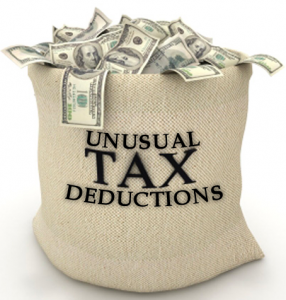Income Tax
How to Find All the Legit Deductions for Clients on Form HUD-1
The sheer volume of paperwork generated during a sale of a principal residence can be intimating. Much of the vital information is summarized on Form HUD-1, but the resulting tax consequences may still leave both buyers and sellers scratching their ...
Mar. 17, 2015

The sheer volume of paperwork generated during a sale of a principal residence can be intimidating. Much of the vital information is summarized on Form HUD-1, but the resulting tax consequences may still leave both buyers and sellers scratching their heads, not to mention plenty of tax professionals.
Essentially, the HUD-1 provides a monetary picture of the real estate closing. It shows the all of the money that is being transferred on both the buyer and seller sides of the ledger. This standardized form includes all the costs, taxes, title fees, commissions, escrow and loan costs. (The HUD-1, which was initially devised for borrowings, is also used for cash sales of property.)
Nevertheless, despite the wealth of useful information that can be found on the HUD-1, the federal income tax ramifications may be confusing, especially where the division of property taxes are concerned. Start with the basic premise that property taxes and qualified mortgage interest paid by a homeowner are generally tax-deductible on Schedule A.
To deduct property taxes, you must have paid them either at settlement or closing or to a taxing authority (i.e. through an escrow account) during the tax year in question. But the individual states handle the treatment of property taxes differently. For instance, some states require prepayment of property taxes, while others play “catch-up” tin he year after taxes are incurred. In addition, a home seller may pay taxes on behalf of the buyer at closing.
For federal tax purposes, the seller is treated as paying property taxes up to the date of the sale (but not including the actual date). At that point, the buyer is treated as paying the taxes. This rule applies regardless of the lien dates under local law and is generally reflected on the HUD-1.
Both the buyer and seller are considered to have paid their own share of the taxes, even if the other paid the entire amount. Thus, you can deduct your share in the year in which the home is sold. The IRS provides the following example in Pub. 530 (Tax Information for Homeowners).
You bought your home on September 1. The property tax for the year (the same as the calendar year) was $730 and was due and paid by the seller on August 15. So you owned your new home during the prop¬erty tax year for 122 days (September 1 to December 31, including your date of purchase). The deduction for property taxes on your home is figured as follows.
- Total real estate taxes for the tax year $730
- Number of days in the tax year you owned the property 122
- Divide line 2 by 365 .3342
- Multiply line 1 by line 3. $244
Under these facts, you can deduct $244 for the year. You’re considered to have paid this amount even if you didn’t have to reimburse the seller under the contract.
Here are some other key points that taxpayers and practitioners should be aware of:
- If you agree to pay delinquent taxes when you buy your home, you can’t deduct them. Instead, you add the cost to your basis in the home.
- Monthly payments often include an amount placed in escrow. In this case, you can only deduct property taxes that the lender actually paid from escrow to the taxing authority, as shown on your real estate tax bill.
- If you receive a refund or rebate of real estate taxes paid this year, you must reduce your property tax deduction by this amount. If the refund or rebate was for property taxes paid for a prior year, you may have to include some or all of the refund in your income.
- An itemized charge for services to specific property or people is not a tax, even if the charge is paid to the taxing authority.
- You can’t deduct transfer taxes and similar taxes and charges on the sale of a personal home. If you are the buyer and pay them, include them in the basis of the property. If you are the seller and pay them, these expenses reduce the amount realized on the sale.
Similar rules apply to mortgage interest paid by the buyer. If you paid $600 or more of mortgage interest (including certain points and mortgage insurance premiums) during the year, you should receive a Form 1098 or other statement from the mortgage holder. The statement will show the total interest paid on your mortgage during the year. If you acquired your principal residence during the year, it also will show any deductible points you paid, as well as any seller-paid points you may deduct.
Finally, the interest paid at settlement should be included on the 1098 or other statement. If it doesn’t, the IRS says to add the interest from the HUD -1 that qualifies as home mortgage interest to the total on Form 1098 or other statement. Enter this amount on Schedule A, explaining the difference (write “See attached” to the right of line 10). Bottom line: Make sure that your clients are deducting the full amount they are entitled to under the tax law.
